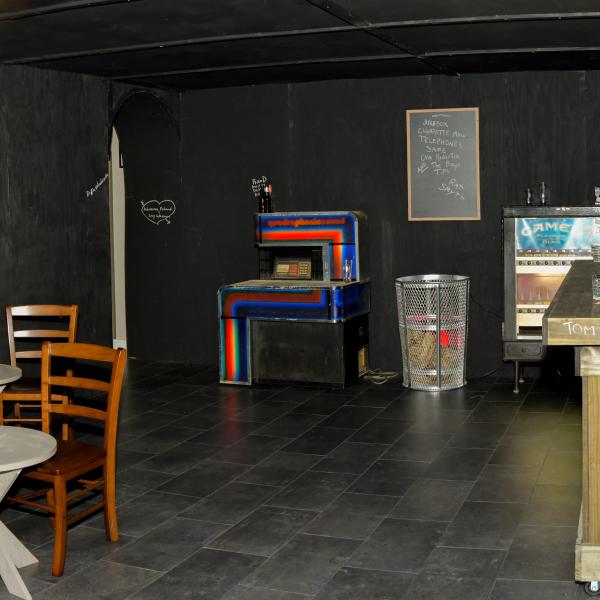Strength in Numbers: Validating Infrastructure Needs for the Folk Arts Subsector

In 2019, the NEA research office published Living Traditions, an analysis of the agency’s Folk & Traditional Arts grants portfolio. The report has launched a major capacity-building initiative for the folk arts field as a discrete arts subsector, which, in many U.S. regions, remains grossly underfunded. The Southwest Folklife Alliance (SFA), a nonprofit affiliated with the University of Arizona, will address “gaps in the map”—as identified by the NEA grants portfolio analysis: namely, the Northern Plains, Southern Plains, Rocky Mountain West, and Alaska—as well as three urban areas.
In each of those sites, SFA and its partners (the Alliance for California Traditional Arts and First Peoples Fund) will tap an anchor organization and other entities to receive technical consultation and logistical services. According to SFA, “the three partners will establish new systems of networking, mentorship, and support that can incentivize investments and greater visibility for traditional art practices in these areas.” As a new research report comments: “In this effort [i.e., the National Folklife Network], a regularly occurring assessment of funding to the subsector would be highly beneficial.”
This report, co-authored by Carole Rosenstein, Mirae Kim, and Neville Vakharia for the Alliance for California Traditional Arts, advances a method that can be used in the periodic tracking of such finances. The researchers mined data from the IRS’ Business Master Files for 2020, covering all registered and active nonprofit organizations. Rosenstein and colleagues flag a total of 7,250 nonprofit “Ethnic, Cultural, and Folk” (ECF) organizations in the U.S.
Per capita, the distribution of those organizations is indicative of the geographic gaps that the NEA’s own portfolio analysis had identified. The authors reference a lack of folk-oriented nonprofits in “the interior areas just off-the-Coast in the Western coastal states, in the adjacent Rocky Mountain region, and in Alaska.” But they also find disparities along racial/ethnic lines.
By scanning the names and missions of the ECF nonprofits, and using internet searches and web scrapes, the team identified organizations by racial/ethnic affiliation. The researchers learned that Hispanic-affiliated organizations were represented at a much lower level than were Hispanics in the U.S. population. They also found that the share of Hispanic-affiliated ECF nonprofits had decreased since 2001. Finally, regardless of their racial/ethnic affiliation, relatively few ECF nonprofits were located in parts of the deep Southwest and South where Hispanics and Blacks, respectively, were the most numerous.
These disparities are even more troubling amid the precarious financial backdrop that Rosenstein and her colleagues paint for the field. They estimate that 70 percent (!) of ECF nonprofits hold assets below $25,000. They also observe that state-level funding amounts awarded to the field “enormously varied (though [they were] almost always quite minimal).”
“In a subsector where public funding consistently has been shown to be distinctly important to organizational income and overall finances, that unevenness is particularly alarming,” the authors conclude. “We found no evidence that state-level public funding is being used to fill gaps in private funding or gaps in service to underserved populations.”
Although they advocate greater public investment in geographic areas underrepresented by ECF nonprofits, Rosenstein et al. acknowledge: “it is not necessarily the case that a lack of ECFs translates into a lack of service. Cultural activities take place every single day outside of nonprofits, in homes, religious institutions, unincorporated associations, businesses, and in public sector spaces and programs.”
And yet, even “while recognizing the value and vitality of those arenas of cultural activity outside formal cultural institutions,” the authors assert, “it is essential to acknowledge that a lack of nonprofit cultural infrastructure will mean that communities have less capacity to share resources, to connect with regional and national networks, and, perhaps most important, to access and maximize private and public funding and other resources such as low-cost loans that are exclusively available to incorporated nonprofit organizations.”
Something like this rationale is behind the NEA’s decision to infuse the folk-and-traditional-arts communities (including nonprofits) in underserved areas with greater public support. The National Folklife Network features a program evaluation that will run alongside the initiative as it unfolds. We look forward to sharing an account of this journey—and any road rules for future travelers.
Sunil Iyengar is the NEA director of the Office of Research and Analysis.




